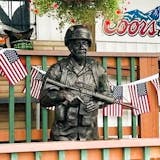As the COVID-19 pandemic continues to affect daily life in Minnesota and cases rise due to the fast-spreading omicron variant, options for testing have expanded.
But with an abundance of choices come questions about which tests to choose and where to find them.
Here are some of the most commonly asked questions.
What is the difference between a PCR and an antigen test?
PCR tests are the most accurate for determining if you have COVID-19, according to the Minnesota Department of Health (MDH). These tests are administered with a nasal swab, an oral swab or by taking a saliva sample. You can take a PCR test whether you're symptomatic or not.
Antigen tests, also called rapid tests, produce results more quickly. These tests are given with a nasal swab and may not be as accurate, especially for people who are not showing symptoms. However, a positive test is considered a probable case of COVID, according to MDH. A public health worker will follow up to give someone who tests positive recommendations on how long to isolate. If you take a rapid test at home, you will not receive those recommendations as home tests are not reported to MDH.
Do at-home COVID-19 tests detect the omicron variant?
Yes, but U.S. health officials say early data suggests they may be less sensitive at picking it up.


